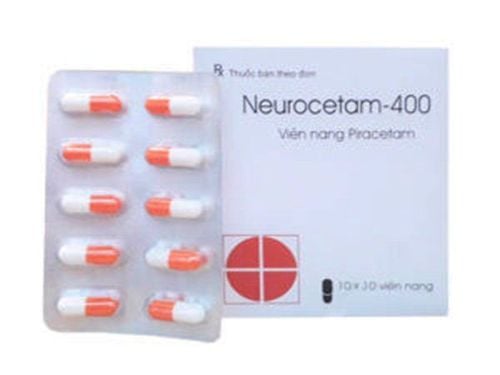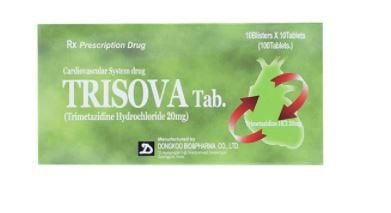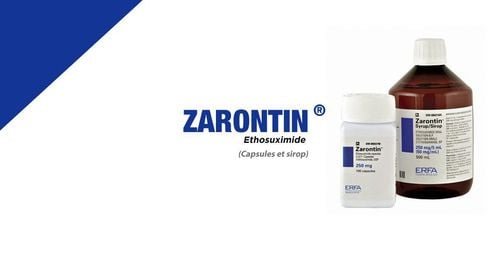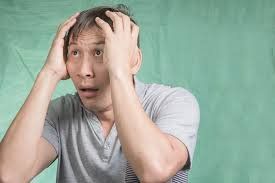This is an automatically translated article.
The article was professionally consulted with Master - Doctor Huynh An Thien - Department of Medical Examination and Internal Medicine, Vinmec Da Nang International General Hospital.The neurological examination was performed meticulously on several occasions. Helps to detect neurological diseases, the location of the disease in the nervous system. From there, the appropriate and definitive treatment direction. However, in order for the neuropsychological examination to take place smoothly, it is necessary to pay attention to the following issues.
1. Determine medical history and condition
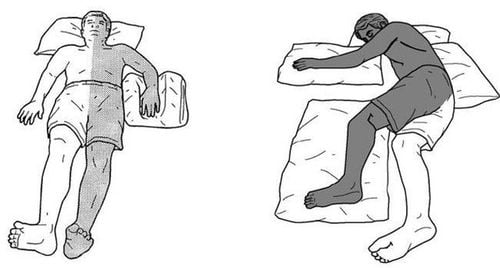
There are also cases for that reason (worried about illness) declaring the disease increased, obsessive, too long to ask about the disease, making it very difficult to know the actual situation of the patient. Therefore, it requires the examiner to have a lot of clinical experience. To be able to learn about the patient's medical condition, ask the patient well, we need to pay attention to the following minimum points, according to the reason for the patient's visit, for example, movement, sensory, and sensory disorders.
1.1 Check for dyskinesia Need to determine how to start: can be gradual or sudden, if gradual need to see if there are any accompanying phenomena? (increased intracranial pressure, convulsions, numbness, pain...).
Are there symptoms of infection, “slight fever”?
Where is the first paralysis, where does it spread? increase or decrease? complete or limited paralysis?
For hemiplegia, more attention should be paid to whether the paralysis is accompanied by coma; convulsion (prior to convulsion or paralysis?); describe the course and association of convulsions with hemiplegia. Is there a speech disorder? Which hand is the patient? For paralysis of the lower extremities, attention should be paid to: Sensory disturbances, subjective sensations and objective sensations, which may be partly due to the patient's exposure to daily living tools. Attention should be paid to the relationship between sensory disturbances and movement disorders. Circulatory dysfunction (usually it is about urination), difficulty or inability to urinate, or bedwetting, or sometimes inability to urinate. 1.2 Examination of Sensory Disorders Usually there are many sensory disturbances, but only two phenomena of pain and numbness should be noted.
Pain sensation:
Frequent headaches and sciatic nerve pain. It is necessary to carefully inquire about the pain area, the nature of the pain (stinging, burning, pulling, crushing, dull, or strong pain). How is the pain spread? in which direction? Since when? Intermittent or frequent pain. Effects increase pain: according to daily activities, according to work, walking, or when changing positions, coughing, sneezing... Pay attention to the numb area. Numbness to touch or contact with objects or temperatures.
1.3 Check for visual disturbances: do you have poor vision? Since when, have you seen the real one and two? accompanied by headache and vomiting? Hearing: Bad headphones? Tinnitus? if you have tinnitus, how does it feel, for example: the ear sounds like a tick in the ear. 1.4 Check for balance disorders Shocked, dizzy, objects spinning in front of you, which direction to turn? Is it related to headphones?
How do you walk? unsteady or easy to lose balance, easy to fall, which side to fall?
1.5 Checking for mental disorders May have the patient recount information from family and agencies.
Confirm whether the memory is good, absent or has the phenomenon of "forgetting near and far". Mood swings, exasperation, easily irritated, sad, too happy.
1.6 Check for other disorders Ask more about digestive disorders (vomiting, abdominal pain) about cardiovascular (palpitations, blood pressure...), about lung, liver diseases (jaundice).
Intercourse: feeling before intercourse; difficulty.
Sleep: have insomnia? for being awake or asleep and then waking up, unable to go back to sleep. Sleep well? Always sleepy, falling asleep all the time.
Current status? How's happening? Is there a recurrence? What is main? headache, body aches, paralysis...
History: Pay attention to the problem of syphilis. Infection?
Family: there is something special.
Individual examples of epileptic cases in children, ask more about the history of obstetrics (easy delivery, difficult birth), in adults, notice scalp scarring, traumatic brain injury in war or traffic accident.
Pay attention to internal diseases, infections, diabetes, cardiovascular diseases, kidney diseases (nephritis), hepatitis, tuberculosis...
2. Notes on neurological examination
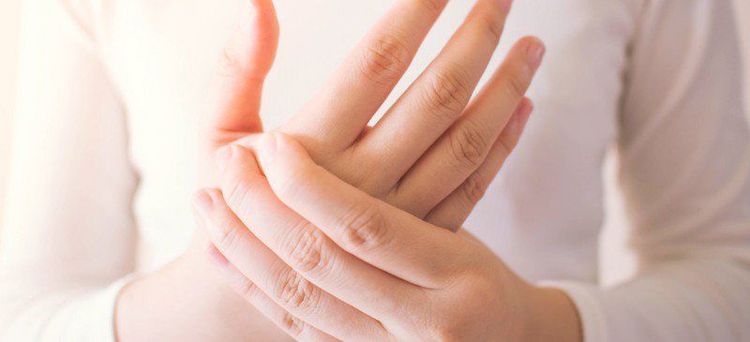
There are many cases in which some neurological signs or symptoms are present, but there is an underlying non-neurological cause. Thus, without careful neurologic examination, the diagnosis may be difficult and appropriate management may not be provided.
Neurological examination, like other diseases, should be comprehensive, systematic and always paying attention to other organs. It is necessary to pay attention to the general principles: compare two diseases, examine each limb, examine in the following order; Postural examination (sitting, lying, standing and walking).
2.1 Physical examination Voluntary motor examination:
Ask the patient to perform common movements: lying on the palm of the hand, flexing - extending the forearm, raising the hand, and flexing the leg. If the patient can't do it, it can be concluded that the paralysis is severe. Physical examination: to assess the patient's muscle strength through the contraction between the patient and the examiner (like the usual movements known as the pincer test). If muscle strength is reduced, it can be concluded that the paralysis is moderate. Mechanical tests: Barré test of the arms and legs. If the Mingazini test is not performed, it can be concluded that there is mild paralysis (failure). Co-ordinated motor examination: the patient performs the following movements, in turn, with the same level of fingers pointing to the nose, fingers pointing to the earlobe; heel to the knee, flip the hands in succession. Through these tests, the following results will be obtained:
Normal points to the right target Only over the target (out of range) Disturbance while standing but on target (disordered) Unable to repeatedly turn the hand upside down (immobility). Loss of motor coordination (also known as staggered, ataxia) Passive motor examination: Passive motor examination, also called tone test. It is necessary to carefully evaluate three aspects: contractility - extensibility, scurvy, muscle strength.
2.2 Evaluation of tendon reflexes:
Biceps tendon reflex Rotator cuff reflex Cylindrical reflex Tendon–triculus reflex Knee tendon reflex Achilles tendon reflex Attention should be paid to the reflex response. reflexes: if necessary to find reflexes of the muscle itself.
Hyperreflexia: strong, sensitive, multidynamic, diffuse and Clonus
Abdominal skin reflex: pay attention to needle grip
Pathological reflex:
Hoffmann reflex and other pathological hand reflexes. Babinski's sign and pathological reflexes of extension and curvature. 2.3 Sensory examination Superficial sensory examination: sensation of touch, sensation of pain according to the sensory root zone. Pay attention to sensory disturbances (types, roots, conduction, circle...).
Deep sensory examination: sense of object recognition, sense of posture, position.
2.4 Medical examination In terms of neurological examination, it is necessary to pay attention to examining and detecting internal disorders in neurological diseases.
Pay attention to pulse, blood pressure, general condition. Pay attention to exploit the disorders in the heart, in the lungs... Pay attention to the abdomen: touch, knock on the liver, spleen... After the examination is completed, it is necessary to summarize: summarize the main symptoms, the associated symptoms. For example, hemiplegia with paralysis... is associated with cerebellar syndrome.
State a common syndrome with properties based on which to proceed with the following steps, local diagnosis, cause diagnosis.
Conduct additional tests, specialist examinations, use non-hazardous probes and hazardous probes. From there, proceed with the steps of diagnosis and treatment with follow-up.
Clinical neurological examination should be performed in neurology clinics with full equipment and experienced medical staff to give the most accurate diagnosis to make treatment easier. easy.
Vinmec International General Hospital is one of the hospitals that not only ensures professional quality with a team of leading medical doctors, modern equipment and technology, but also stands out for its examination and consultation services. comprehensive and professional medical consultation and treatment; civilized, polite, safe and sterile medical examination and treatment space.
Please dial HOTLINE for more information or register for an appointment HERE. Download MyVinmec app to make appointments faster and to manage your bookings easily.
The article references the source: Vietnam Neurological Association




